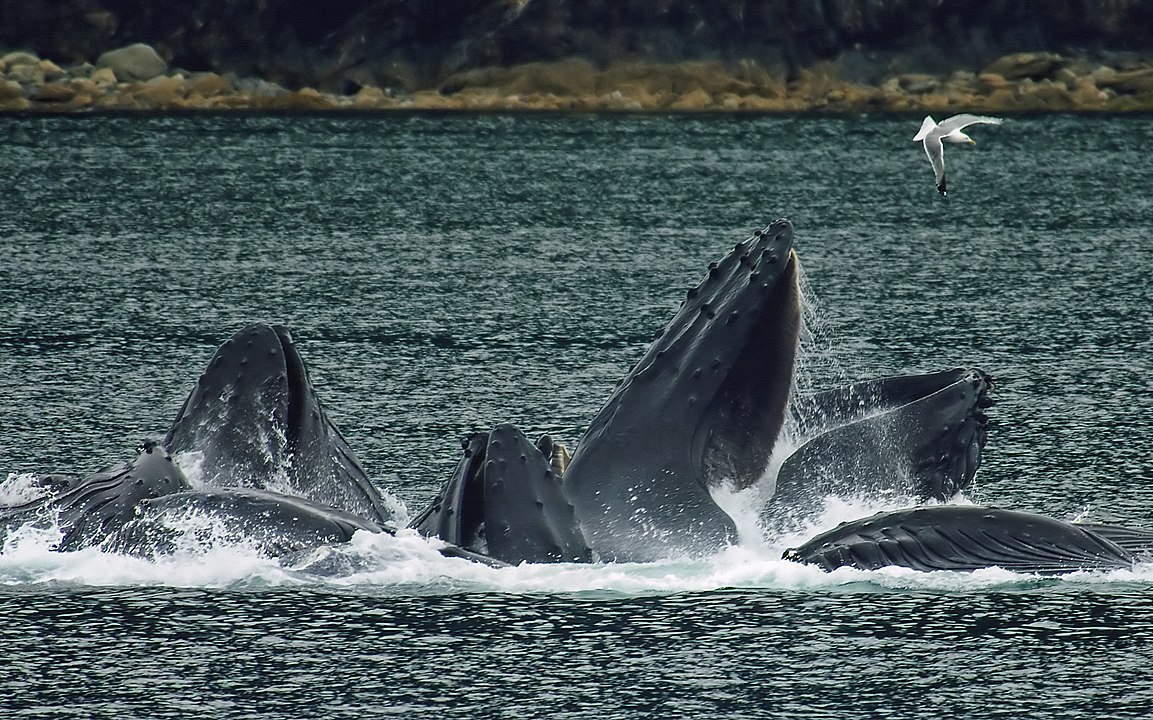
Researchers have figured out how giant whales make their beautiful songs in the ocean. Humpback whales and other large baleen whales have a special voice box for singing underwater.
This discovery, shared in the journal Nature, explains why our noisy activities in the ocean bother these magnificent creatures. Whale songs are in a specific pitch range, which happens to clash with the noise made by ships.
“Sound is absolutely crucial for their survival, because it’s the only way they can find each other to mate in the ocean,” said Professor Coen Elemans from the University of Southern Denmark, who headed the research.
“[These are some] of the most enigmatic animals that ever lived on the planet,” Elemans told BBC News. “They are amongst the biggest animals, they’re smart and they’re highly social.”
Baleen whales, a group comprising fourteen species, including the blue, humpback, right, minke, and gray whale, don’t have teeth. Instead, they have baleen plates to filter small sea creatures from the water.
How they create their intricate and sometimes eerie songs has been a puzzle until now. Professor Elemans expressed great excitement at finally unraveling this mystery, as reported by BBC.
Experiment on the voice boxes of three whale carcasses
Professor Elemans and his team conducted experiments using larynxes, also known as “voice boxes,” taken from three stranded whale carcasses: a minke, a humpback, and a sei whale. They then pushed air through these large structures to create sounds.
In humans, our voices result from vibrations when air flows over vocal folds in our throat. However, baleen whales have a different setup. Their larynx has a large U-shape with a layer of fat at the top. This unique vocal anatomy allows the whales to sing by reusing air and stops them from inhaling water.
🌊🐋 #WhaleSongMystery Solved! Scientists have unraveled how baleen whales, including the majestic blue whale, “sing” their haunting tunes underwater.
Unlike toothed whales, baleen giants use a specially evolved larynx, equipped with a unique fat and muscle cushion, to… pic.twitter.com/enJ4d1HtIq
— GAROWE ONLINE (@GaroweOnline) February 21, 2024
The scientists created computer models of the sounds and found that baleen whale songs are limited to a narrow frequency range, which coincides with the noise generated by ships.
They can’t just decide to sing at a higher pitch to avoid the noise we create in the ocean, clarified Professor Elemans.
Their research revealed how our underwater noise might block whales from communicating across large areas. This understanding could be crucial for protecting humpbacks, blue whales, and other endangered ocean giants, as reported by BBC.
Sailors used to attribute whale songs to ghosts or mythical creatures
The new study also sheds light on questions that researchers have pondered for decades related to these mysterious songs. In the past, sailors sometimes associated the songs with ghosts or mythical sea creatures.
Dr. Kate Stafford, a specialist in whale communication from Oregon State University, called the study “groundbreaking.”
The creation and understanding of sound are crucial for marine mammals, so any research that reveals how they produce sounds has the potential to advance our knowledge, according to Dr. Kate.
See all the latest news from Greece and the world at Greekreporter.com. Contact our newsroom to report an update or send your story, photos and videos. Follow GR on Google News and subscribe here to our daily email!



